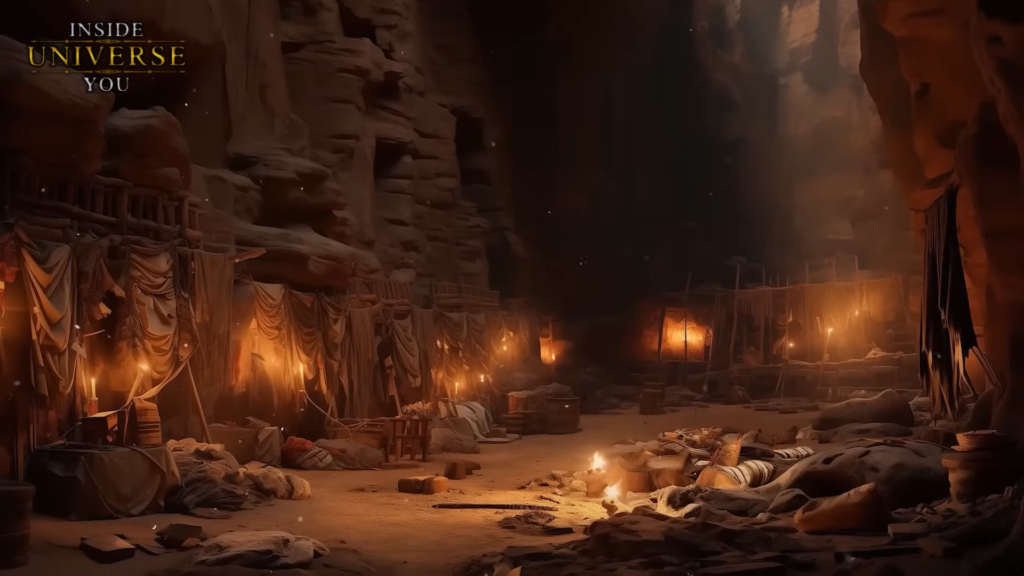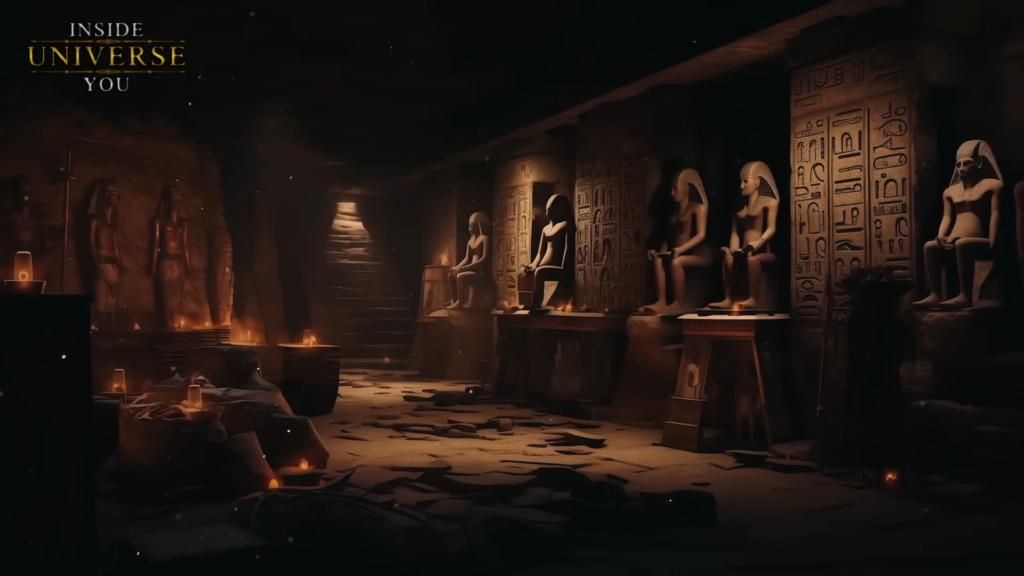In the early dawn of the 20th century, a story emerged from the depths of the Grand Canyon so fantastical and so shrouded in mystery that it would captivate the imaginations of generations to come. It was in the year 1909 when the Phoenix Gazette published an article that would send ripples through the archaeological community, an article that spoke of an astonishing discovery deep within the labyrinthine expanse of the Grand Canyon, a finding that hinted at the existence of an ancient Egyptian civilization in this remote part of the world.

According to the article, an expedition funded by the Smithsonian Institution led by a professor S.A. Jordan ventured into a remote and inaccessible part of the Grand Canyon known as the Marble Canyon. Here, they purportedly uncovered a series of caves that held evidence of an ancient Egyptian civilization. The explorers reportedly found a network of tunnels and chambers, some of which were said to contain artifacts and items that suggested a connection to ancient Egypt.
These caverns were described as being vast and complex, with rooms that hinted at ceremonial purposes and living quarters. The layout of these caverns as described bore a striking resemblance to ancient Egyptian temples and tombs, fueling speculation about their origins. Specifically, these descriptions often refer to a cave system known as the Kincaid Caverns, named after explorer G.E. Kincaid, who allegedly discovered them.

According to the legend, Kincaid encountered a series of chambers that were architecturally complex, with rooms that appeared to be used for ceremonial purposes, and others that resembled burial chambers, complete with artifacts. One of the most tantalizing details in the account was the discovery of hieroglyphics. These inscriptions were said to be uncanny to ancient Egyptian writing, a claim that, if true, would have been groundbreaking.
Alongside these hieroglyphics, the walls of the caverns were adorned with paintings that depicted scenes reminiscent of life along the Nile, including images of people and animals that were part of the Egyptian iconography. The array of artifacts described in the story was extensive and varied. There were claims of dozens of mummified bodies wrapped in a manner similar to Egyptian mummies. These mummies were in a state of preservation akin only to those of ancient Egypt, suggesting a direct link to Egyptian burial practices.

Descriptions of the mummies included details of intricate wrapping techniques and the use of resins, exactly mirroring the mummification processes of the Nile Valley. The presence of these mummies in the Grand Canyon would have been a groundbreaking revelation, suggesting a previously unknown cross-continental connection between ancient civilizations.
The pottery reportedly found in the caverns was described as being of sophisticated design, with some pieces bearing decorative motifs and stylistic elements reminiscent of ancient Egyptian craftsmanship. These vessels provided invaluable insights into the daily lives, trade, and cultural exchanges between distant civilizations. There were also discoveries of metal artifacts, including weapons and tools. These items were said to be made primarily of copper and gold, materials that were highly valued in ancient Egypt.
Many of these metal objects had hieroglyphic inscriptions. The craftsmanship and design of these metal artifacts were described as being advanced, suggesting a level of technological sophistication that was unexpected for the region and era. Perhaps the most visually striking of the alleged discoveries were the statues and idols. These figures were said to resemble Egyptian deities and pharaohs, carved with the precision and artistry characteristic of ancient Egyptian sculpture.

The presence of such idols would have implied not just a fleeting contact between the two cultures but a sustained and influential presence, potentially indicating a form of worship or deep cultural integration. The authenticity and origin of these artifacts and relics have been the subject of much debate. In the grand narrative of the lost Egyptian civilization in the Grand Canyon, the artifacts and relics stand as the most tangible link to this supposed ancient world.
The news was sensational, suggesting that the annals of history were not as set in stone as once believed. Before this groundbreaking article, whispers of strange findings in the Grand Canyon had been circulating for years. Tales of hidden caves and mysterious artifacts had been part of local lore, spoken in hushed tones by Native Americans and early settlers.
These stories, passed down through generations, spoke of underground tunnels and chambers filled with treasures that did not match the known history of the indigenous peoples of the region. In the late 19th and early 20th centuries, there were reports of mummies found in areas such as the Mississippi Valley, which were said to resemble Egyptian mummies. These mummies were reportedly found in sarcophagi with carvings and inscriptions that appeared Egyptian in style.
However, these findings were often poorly documented, and many were lost or destroyed, making verification difficult. These tales, largely dismissed by mainstream historians, found a new lease of life with The Gazette’s publication in 1909. The idea that ancient Egyptians might have crossed oceans to reach the American continent was a concept that turned traditional historical narratives on their head.
The public’s fascination with this story was fueled by the era’s zeitgeist, a time when Egyptology was in its golden age. The discovery of Tutankhamun’s tomb was still a decade away, but the Western world was already enthralled by the mysteries of ancient Egypt. The possibility that traces of this ancient civilization could be found in the United States was a tantalizing thought.
Moreover, the story was imbued with an air of conspiracy, adding another layer of intrigue. The involvement of the Smithsonian Institution, who were supposed to be a beacon of historical and scientific research and its subsequent silence on the matter, led to rampant speculation. Was the Smithsonian part of a larger cover-up? Were there truths about our past that were too controversial, too paradigm-shifting to be revealed? Some argued that the revelation of an ancient Egyptian civilization in America would upend the established historical and archaeological narratives, causing an academic upheaval.
Others suggested that the Smithsonian was acting under the influence of political or cultural agendas, aiming to preserve the conventional story of human history and migration. Central to the mystery were the artifacts themselves. If the expedition had indeed uncovered Egyptian relics in the Grand Canyon, what became of them? Were they hidden away in the vaults of the Smithsonian, accessible only to a select few? The theory of a lost Egyptian civilization in the Grand Canyon is intricately tied to the broader concept of transoceanic contact, a subject that has long fascinated historians and archaeologists. This idea proposes that ancient civilizations, far more advanced in seafaring than previously thought, engaged in intercontinental travel and cultural exchange, long before the age of European exploration.
The notion that ancient Egyptians might have reached the shores of North America and left an indelible mark on the Grand Canyon is a captivating extension of these theories. Transoceanic contact theories are built on a combination of historical accounts, archaeological findings, and a re-evaluation of ancient seafaring capabilities. Ancient texts and folklore from various cultures contain hints of voyages to distant lands, often described in mythical or allegorical terms.
In addition, artifacts found in locations far from their cultural origins have raised questions about how they arrive there. These theories gained momentum with the discovery of the Norse settlement at L’Anse aux Meadows in Newfoundland, proving that Vikings reached North America around 1000 AD, long before Columbus. This was a clear evidence that what is written in our history books may easily turn out to be completely false.
The ancient Egyptians were skilled in riverine navigation, as evidenced by their extensive




